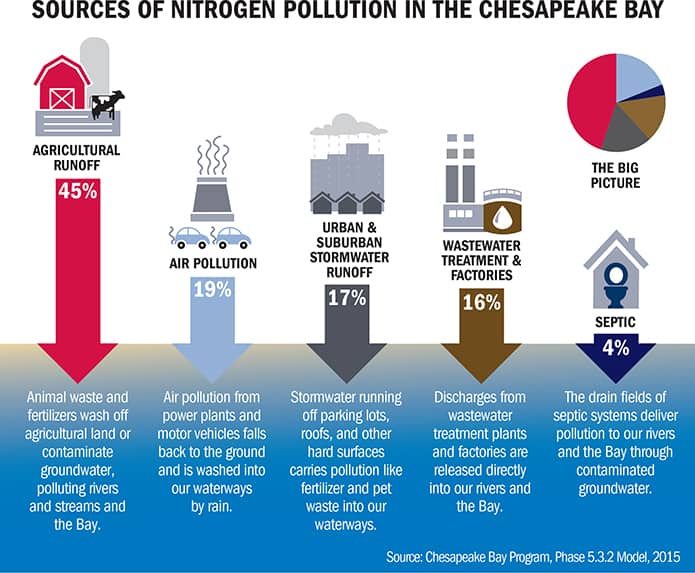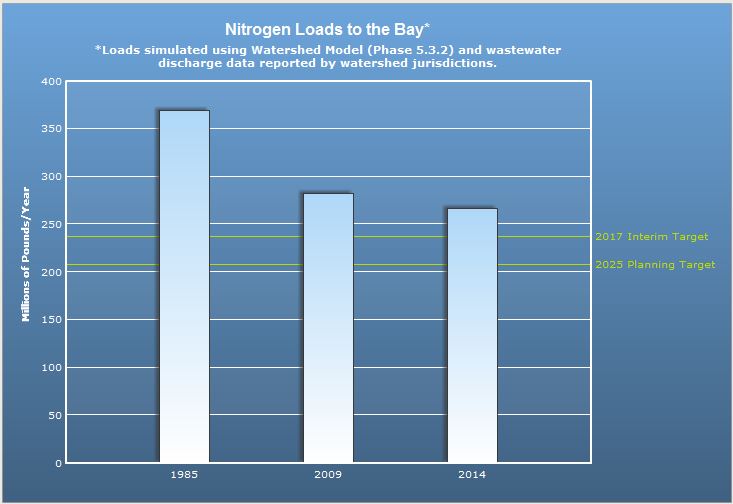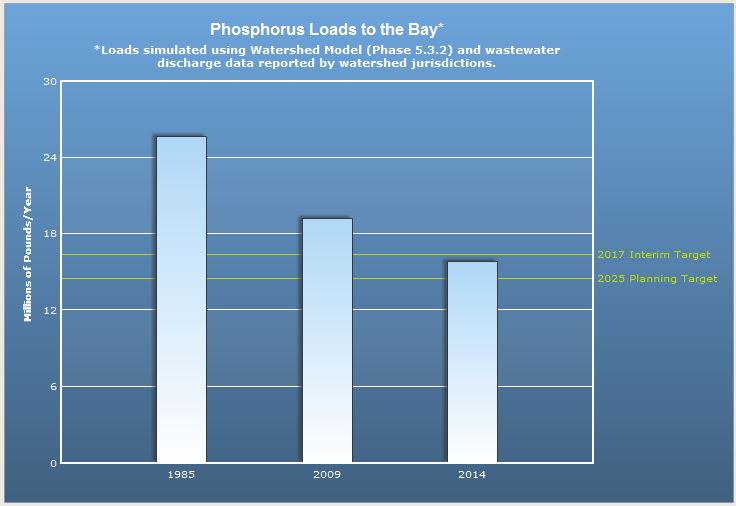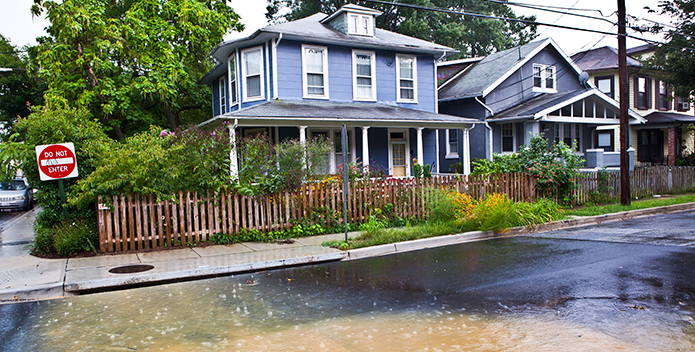High levels of nitrogen and phosphorus fuel unnaturally high levels of algae growth in the water, blocking sunlight from reaching underwater grasses that serve as food and habitat. When the algae die they are decomposed by bacteria that consume the oxygen in the water.
Too much sediment—tiny particles of dirt, sand, and clay floating in the water—turns the water cloudy, also blocking sunlight from reaching aquatic grasses. Oysters and other bottom-dwelling species can be smothered when that sediment finally settles to the bottom.
Where Does it Come From?
Excessive amounts of nitrogen and phosphorous come from fertilizers, wastewater, septic tank discharges, air pollution, and runoff from farms, cities, and suburbs. Excessive amounts of sediment are carried into our waterways from erosion and from construction sites.

Source: Chesapeake Bay Program, Phase 5.3.2 Model, 2015
The development of forests and farmland robs the watershed of its natural ability to filter these pollutants before they reach our streams, rivers, and the Bay. As a result, far too much of these pollutants wash off the land and down the Bay's freshwater tributaries, dramatically diminishing the Bay's dissolved oxygen levels, resulting in huge "dead zones" where aquatic denizens cannot live.
What Does the Chesapeake Clean Water Blueprint Have to Do with It?
The federal Clean Water Act (CWA) requires states to identify polluted waterways and list them officially as "impaired." The mainstem of the Bay and many of its rivers and streams are on the impaired waters list because of reduced levels of oxygen and pollution that kill off fish, crabs, oysters, and other aquatic life.
Under the CWA, the Environmental Protection Agency (EPA) is required to set limits on the pollutants that cause these waterways to be impaired.
In December 2010, under an Executive Order from President Obama, EPA set scientifically derived limits on nitrogen, phosphorous, and sediment pollution for the entire 64,000-square miles of the Chesapeake Bay watershed. The states are accountable for creating and implementing plans that will achieve those limits by 2025. These pollution limits and the state plans being developed to enforce them make up a blueprint for cleaning up the Chesapeake Bay and its rivers and streams.
Pollution reduction progress (source: Chesapeake Bay Program, Watershed Model 5.3.2)
Nitrogen Loads
to the Bay
(million lbs/year)
1985–369.78
2009–282.66
2012–264.14
2017–219.04
2025–191.57

Phosphorus Loads
to the Bay
(million lbs/year)
1985–25.62
2009–19.23
2012–17.97
2017–16.42
2025–14.55

Sediment Loads
to the Bay
(million lbs/year)
1985–10.80
2009–8.68
2012–8.24
2017–7.87
2025–7.34




